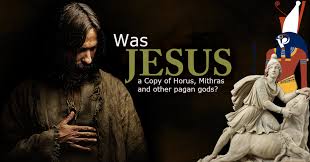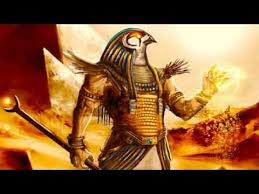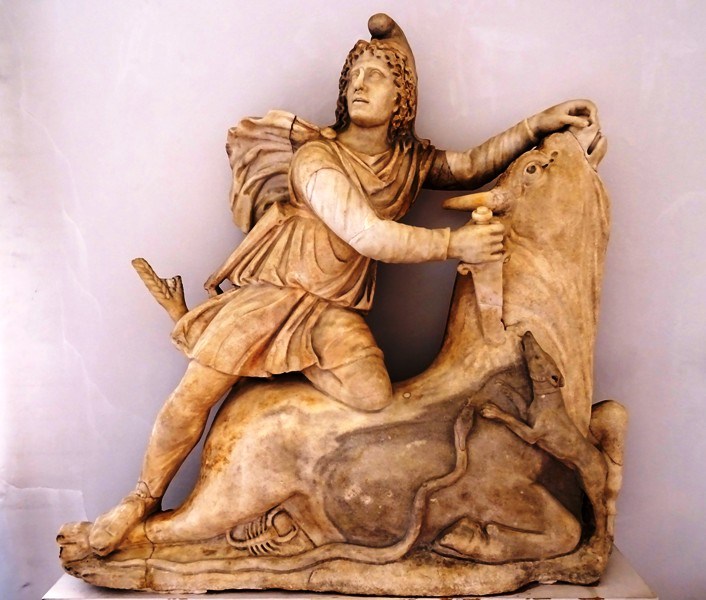Is the story of Jesus Christ just a copy from pagan sources?
More than a century ago, some scholars published books and articles that pointed out similarities between the life of Jesus and those of mythological gods like Horus, Mithras, Adonis, Dionysus, Osiris and others. Recently the charge that Christianity borrowed many of these pagan myths and grafted them into the Christian story has been enjoying a renaissance. A best selling book was “The Pagan Christ” by former Anglican priest Tom Harpur. The film, “Zeitgeist” by Acharya films is very popular on college campuses in America. It maintains that Jesus is a made up character and that the similarities between Christ and many of the ancient gods is not coincidental. It states that the disciples, in starting their own religion, borrowed many of the pagan myths to fill out their story.
Harpur said that, “Not one single doctrine, rite or tenet in Christianity was in reality a fresh contribution to the world.” But then he goes on to say that the one thing Christianity did that the pagan myths did not do was to make Jesus an historical person. The Church converted a whole mass of romantic legends and myths into a so-called history. Authors like Hugh J. Schonfield (author of The Passover Plot), philosopher John H. Randall and Dan Brown (author of The DaVinci Code) agree as do Timothy Freke and Peter Grandy (author of Canada’s 2004 best selling book, “The Jesus Mysteries”).
But let’s slow down and look at the facts. None of these claims are taken seriously by legitimate scholars. Even skeptics, like Bart Ehrman, agree that Jesus was an historical person. Ehrman has also said that no historian worth his salt would say that Jesus didn’t exist historically. Even H.G. Wells said, “I am an historian, I am not a believer, but I must confess as an historian that the penniless preacher from Nazareth is irrevocably the very center of history. Jesus Christ is easily the most dominant figure in all history.”
So what is the Christ myth? What do these people believe about Jesus? While not all of these people believe all of these things, a general consensus emerges. They believe;
-that Jesus either didn’t exist historically, or He was just a man whose later followers deified Him.
-that He had 12 disciples
-that He was born of a virgin on December 25th
-that 3 kings visited His birthplace after following a star in the east
-that He did miracles, walked on water and fed many people
-that His disciples were beheaded
-that He was crucified and after 3 days, He rose from the dead
Let’s do something that these Christ myth authors rarely do….consult the primary sources for these comparisons. The primary sources that need our attention are:
-the New Testament Gospels
-the ancient texts that have the myths of Horus, Mithras and others. Let’s look at Horus first.
-Horus was born of a virgin on December 25th
-He was born in a manger
-3 kings followed a star in the east to his birthplace
-He was a child teacher by the time he was 12
-He was baptized in a river by Anup (who was later beheaded)
-He had 12 disciples, he was a fisherman, he was crucified between 2 thieves, and he was raised from the dead after 3 days.
Horus’ parents were the Greek gods ISIS (his mother) and Osiris (his father). Prior to Horus’ conception, his dad Osiris got into a fight with another god, was killed and chopped up into several pieces. ISIS gathered up the pieces and conceived Horus by hovering over his phallus. I’m not kidding. Do you see a virgin birth here? Hovering over her butchered up dead husband’s phallus is not a virgin birth.
While Horus may have been born on December 25th, Jesus wasn’t and the church never claimed He was. He was probably born in the spring as shepherds wouldn’t be in the fields with their flocks in December (Luke 2:8). To see why December 25th was chosen to celebrate His birth, see “The Real Christmas Story”, week 1 at http://BSSSB-LLC.com/video-courses-overview/the-real-christmas-story/.
There is nothing about Horus being born in a manger This is claimed in one of the book about Him but no source material is referenced. Sometimes these Christ myth authors will quote other Christ myth authors as a source but that’s not reliable.
Another claim is that the birth of Horus was announced by 3 kings who followed a star from the east. Sounds a lot like the biblical account, right? Upon closer examination, this falls apart also. These stories about 3 kings following a star from the east to announce the birth of another king or cosmic savior didn’t even start until the 19th century. How could the gospels writers copy from these other religions when they didn’t even exist yet? Its quite possible that these 19th century ‘mystery’ religions borrowed from the Christian gospels. But these writers weren’t very good copyists as the bible story no where mentions there were 3 kings. It only mentions that they brought 3 gifts and these people were Magi, not kings. Furthermore, these Magi didn’t go to a ‘manger’ to see a ‘baby’, they went to a ‘house’ to see a ‘child’ (Matthew 2:9-11). Matthew tells us that King Herod sent his soldiers to kill all the male children under the age of 2 years, so Jesus was probably 1.5-2 years old when the Magi visited Him.
There is also no record of Horus teaching in a temple at 12 years old or that he was baptized by someone who was later beheaded, like John the Baptist was (Mark 6:17-29).
When the writer of this ‘parallel’ was asked for a supporting source, he said it was in the ‘Egyptian Book of the Dead’. But Egyptian scholars have said that this story does not appear in it at all.
Finally, Horus was not crucified between 2 thieves and was not resurrected from the dead 3 days later. In most of the Horus stories, he doesn’t die at all. In only one story does he die, is cut up into pieces and is thrown into a river. Crocodiles fished the pieces of him out. So how is this a resurrection? So much for the gospels writers borrowing details from the myth of Horus.
Now let’s look at Mithras. Mithraism was a Persian mystery religion practiced in the Roman Empire, especially in the military and the merchant class, in the 2nd-4th centuries A.D.
The parallels between Christ and Mithras is as follows:
-Mithra was born of a virgin on December 25th in a cave
-shepherds attended his birth
-he had 12 disciples
-he was buried in a tomb and 3 days later he arose from the dead
Mithra wasn’t born of a human mother. He came out of a rock fully formed with a dagger in one hand and a torch in the other. This means that he wasn’t born in a manger either. A cave is not a manger in anybody’s definition. We have already dealt with the fact that Jesus wasn’t born on December 25th (see our answer under Horus).
Mithraism does tell of shepherds who helped dig Mithras out of a rock. But the earliest of these stories come 200 years after the Christian gospels were written. And how do you get the similarities between Christ and Mithras on this story? Outside of the fact that shepherds are mentioned, there is nothing even remotely similar about them.
Mithras didn’t have 12 disciples. In the Persian version, he had one disciple. In the Roman version, he had 2 disciples.
There is no mention in any of the Mithraic literature of Mithras dying. Thus, there cannot be a resurrection. And he cannot be buried in a tomb because he never died.
Early Christian apologists, like Tertullian (160-220 A.D.) and Justin Martyr (100-165 A.D.) argued very strongly that Mithraism borrowed heavily from Christianity and they denounced it as a satanic imitation.
We can do the same with all the other Christ myth parallels, from Dionysus to Attis, Krisha and Adonis. None of these parallels hold up under examination from their original documents. The authors of the Christ myth parallels have no real support from the academic scholarly world. But, hey, everybody loves a good conspiracy mystery and Satan loves nothing more than getting people to doubt the biblical story of Jesus. If you doubt this story, you will not see your need for Jesus as your Savior. This is why God has put Christian apologetics in the church. To answer these bogus claims and by doing so, to point people to Jesus and to strengthen your faith in Him.
References:
www.tektonics.org/copycathub.html
“The Problem of God”, pages 85-104, by Mark Clark
“The Case for the Real Jesus”, pages 157-188, by Lee Strobel
For His Kingdom,
Dave Maynard
https://BSSSB-LLC.com









